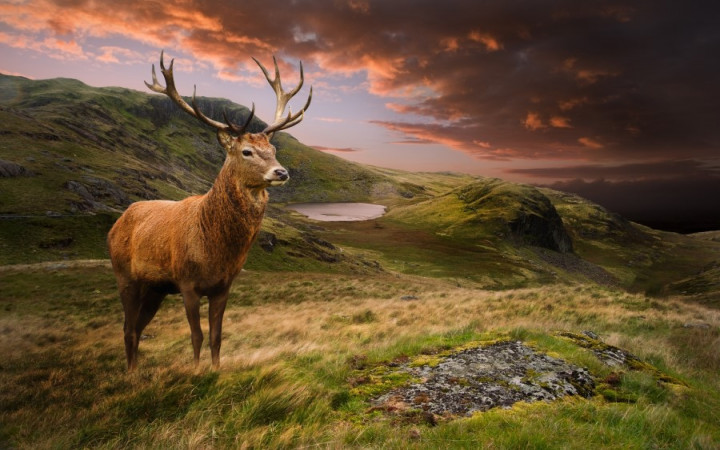Today’s Wonder of the Day was inspired by kash. kash Wonders, “why do deer shed antlers” Thanks for WONDERing with us, kash!
As Christmas approaches, many kids' thoughts turn to that around-the-world trip Santa Claus makes on the night of Christmas Eve. With his sleigh overflowing with gifts for kids all over the world, Santa harnesses the power of a group of magical beasts to complete his incredible journey. What are we talking about? Reindeer, of course!
How do you know a reindeer when you see one? If it's leading the pack and has a bright red nose, you've probably spotted Rudolph. Otherwise, you can usually recognize reindeer — and other types of deer — by the tell-tale antlers many of them sport on the tops of their heads.
Although it's possible for a female deer, known as a doe, to grow a set of antlers in rare circumstances, most of the time when you see a deer with antlers, it's a male, known as a buck. Deer and similar animals, such as elk (collectively called ungulates), only have antlers for part of the year. In fact, over the course of a typical year, a male deer will lose his antlers and grow a whole new set!
Most deer shed their antlers in winter or early spring (often between January and April), although the exact date varies and depends upon various factors. The antlers are made of bone-like tissue that resembles a honeycomb. They regrow quickly over the course of two to four months during the summer.
The rapid growth of antlers during the summer is fueled by hormones that are triggered by increasing amounts of daylight. When new antlers begin to grow, they're covered in a soft, skin-like membrane called "velvet." This layer of velvety fuzz surrounds blood vessels that supply nutrients, such as amino acids, minerals, proteins, and hormones, to keep the antlers growing.
In the fall, decreasing amounts of daylight trigger an increase in the hormone testosterone. Rising testosterone levels slow the growth of the antlers, which are usually fully-grown by late fall. The velvety covering falls off as deer rub their antlers on trees in preparation for mating season.
Eventually, as mating season ends and winter sets in, testosterone levels decrease. The drop in testosterone levels activates osteoclasts, which are specialized cells that help to reabsorb calcium in the bone around the area where the antlers are attached (called the pedicle).
When the pedicle gets weak enough (the process can take two to three weeks), the antlers can be shed easily. Sometimes they simply fall off on their own. At other times, they might be knocked off when a deer rubs them on a tree. The process of shedding their antlers doesn't hurt the deer.
Exactly when the antlers will be shed depends upon a variety of factors. Deer that are injured or malnourished may shed their antlers earlier than normal, as these conditions may activate the osteoclast cells earlier than usual. On the other hand, younger deer that are healthy and live in mild climates may keep their antlers late into the spring.





